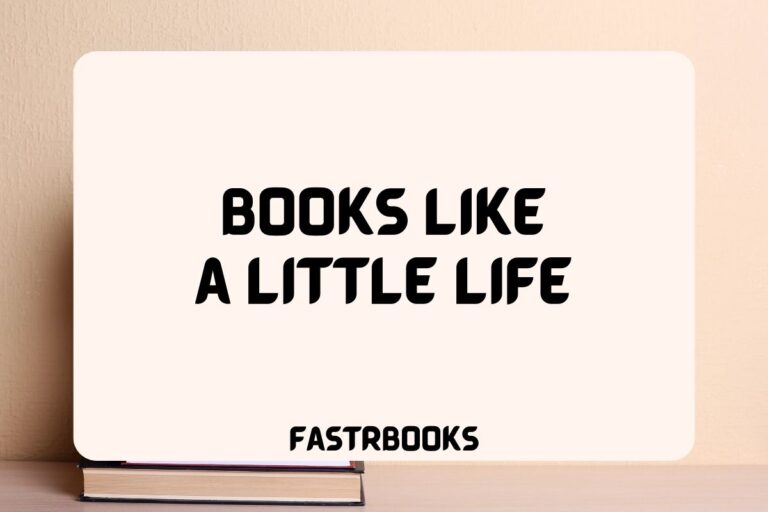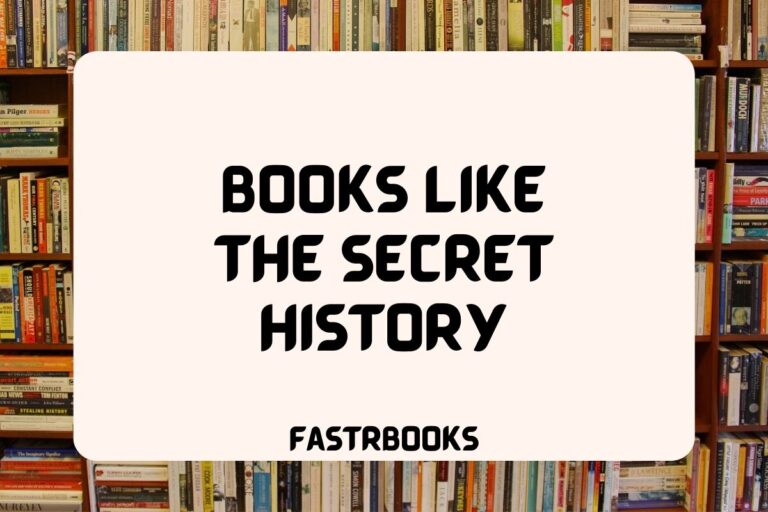10 Books Like Fight Club
You are not your Ikea furniture. You are not your job. You are not your streaming queue.
If these opening lines resonate with you, then you, my friend, have likely wandered the desolate aisles of existential dread alongside the unnamed insomniac narrator of Chuck Palahniuk’s cult classic, “Fight Club.”
The subversive, dark satire left its mark on readers, and if you’re itching to delve deeper into that world of underground rebellion and biting social commentary, then buckle up, because we’re going on a literary fight club of our own.
This list is your first rule: Get ready to break the rules. We’ll be throwing down with novels that pack the same punch as a well-placed Tyler Durden right hook, exploring themes of consumerism, toxic masculinity, and the search for meaning in a world obsessed with buying things, not building lives.
So, grab your metaphorical (or literal) bar of soap, and prepare to confront the unsettling truths lurking beneath the surface of our modern existence.
Let the reading commence.
Books Like Fight Club
1. American Psycho by Bret Easton Ellis
“American Psycho” is a novel that delves deep into the psyche of its protagonist, Patrick Bateman, a wealthy New York City investment banker who hides his psychopathic ego from his co-workers and friends as he delves deeper into his violent, hedonistic fantasies.
Written by Bret Easton Ellis and published in 1991, the novel is a brutal satire of the American consumer culture of the 1980s, featuring graphic and disturbing content. It explores themes of identity, materialism, and the nature of evil, all narrated by the unreliable and chilling voice of Bateman.
Major Similarities:
Like “Fight Club,” “American Psycho” scrutinizes the effects of consumer culture and the search for identity in a postmodern world. Both novels feature protagonists struggling with their inner demons and societal expectations, using violence as a means to express their disillusionment with the world around them.
The darkly satirical tone and the critique of masculinity and materialism present in both books create a compelling commentary on contemporary society.
2. Choke by Chuck Palahniuk
“Choke” is another novel by Chuck Palahniuk, published in 2001, that follows the story of Victor Mancini, a medical school dropout who devises a complicated scam to pay for his mother’s care in a private hospital.
Victor pretends to choke on pieces of food in upscale restaurants, manipulating the wealthy patrons into “saving” him and subsequently feeling responsible for him, leading them to send him money.
This novel, like many of Palahniuk’s works, is filled with bizarre characters, twisted plots, and a deep dive into themes of addiction, sexuality, and the search for personal identity.
Major Similarities:
“Choke” shares with “Fight Club” Palahniuk’s distinctive narrative style, characterized by dark humor, a critique of consumer society, and the exploration of unconventional ways to find meaning in modern life.
Both novels feature flawed, complex protagonists who engage in self-destructive behaviors as a coping mechanism to deal with their existential crises and a society they find hollow and unfulfilling.
3. Less Than Zero by Bret Easton Ellis
“Less Than Zero” is Bret Easton Ellis’s debut novel, published in 1985, presenting a chilling tale of a group of rich, disaffected college students returning to Los Angeles for the winter break.
Through the eyes of its protagonist, Clay, the novel explores themes of alienation, moral emptiness, and the loss of innocence amidst the decadent, nihilistic lifestyle of the 1980s LA youth scene.
The narrative is marked by its minimalist style and detached emotional tone, offering a stark commentary on the excesses of the era.
Major Similarities:
Similar to “Fight Club,” “Less Than Zero” explores the themes of disillusionment and the search for identity in a materialistic society.
Both novels critically examine the vacuous nature of consumer culture and the ways in which it affects young men, leading them to a sense of emptiness and a lack of genuine human connection. The minimalist storytelling and the exploration of dark themes link the two works in their critique of contemporary life.
4. Invisible Monsters by Chuck Palahniuk
“Invisible Monsters” is a novel by Chuck Palahniuk, published in 1999. It revolves around a disfigured former fashion model who, seeking revenge and transformation, embarks on a road trip with a transgender woman named Brandy Alexander.
The narrative is nonlinear, jumping through time and perspectives to explore themes of beauty, identity, and transformation in a satirical and often shocking manner. Palahniuk’s signature style of provocative storytelling challenges the reader’s perceptions of normality and beauty.
Major Similarities:
“Invisible Monsters” and “Fight Club” both delve into the themes of identity and societal norms, employing a narrative style that is both jarring and enlightening.
Palahniuk uses a mix of dark humor, grotesque scenarios, and twisted characters to critique societal obsession with appearance and material success, much like the exploration of toxic masculinity and consumer culture in “Fight Club.” Both novels encourage readers to question societal values and the nature of their own identities.
5. Trainspotting by Irvine Welsh
“Trainspotting” is a novel by Irvine Welsh, published in 1993. It is a collection of connected stories about a group of heroin addicts living in Edinburgh, Scotland.
The novel is known for its raw depiction of drug use, its Scottish dialect, and its exploration of the lives of its characters with a mix of humor and stark realism. “Trainspotting” examines themes of friendship, the search for meaning, and the struggle to escape the socioeconomic constraints of the characters’ environment.
Major Similarities:
Like “Fight Club,” “Trainspotting” offers a gritty, unflinching look at the underbelly of society and the ways in which young men deal with disenchantment and alienation.
Both novels feature anti-hero protagonists and a narrative that challenges societal norms and expectations. The exploration of self-destructive behavior, identity, and the critique of societal values are central to both works, making “Trainspotting” resonate with fans of “Fight Club” for its similarly dark humor and poignant social commentary.
6. The Rules of Attraction by Bret Easton Ellis
“The Rules of Attraction” is a novel by Bret Easton Ellis that was published in 1987. It explores the lives of a group of college students attending Camden College in New Hampshire, focusing on their sexual encounters and substance abuse in a seemingly endless cycle of parties and relationships.
The narrative is uniquely structured through the viewpoints of various characters, providing a disjointed yet compelling exploration of their interconnected lives. Themes of nihilism, disillusionment, and the quest for meaning in a postmodern world dominate the story, painting a bleak picture of youth culture.
Major Similarities:
Like “Fight Club,” “The Rules of Attraction” delves into the disaffection and aimlessness felt by young adults in contemporary society.
Both novels offer a critique of the emptiness of materialistic and hedonistic pursuits, presenting characters who are desperately searching for something genuine in a world they find superficial and unfulfilling.
The unconventional narrative structure and the focus on dark themes of existential angst link these novels in their exploration of the darker aspects of human nature and society.
7. A Clockwork Orange by Anthony Burgess
“A Clockwork Orange” is a novel by Anthony Burgess, published in 1962. It is set in a dystopian future society and follows the story of Alex, a delinquent youth who revels in acts of ultra-violence and is eventually subjected to a controversial experiment to cure him of his tendencies.
The novel is notable for its inventive use of language, incorporating a Russian-influenced slang called Nadsat, and its deep philosophical questions about free will, the nature of evil, and the possibility (or impossibility) of redemption.
Major Similarities:
Similar to “Fight Club,” “A Clockwork Orange” explores themes of violence, identity, and societal control, questioning the nature of freedom and the morality of imposing change on an individual. Both novels present a critical view of society, using their protagonists’ violent tendencies to comment on broader social and psychological issues.
The blend of dark humor, social commentary, and the exploration of the potential for change in individuals serves as a significant point of connection between the two works.
8. Glamorama by Bret Easton Ellis
“Glamorama” is a novel by Bret Easton Ellis, published in 1998. It centers around Victor Ward, a model and nightclub manager who becomes embroiled in a complex conspiracy involving terrorism, celebrity culture, and political intrigue.
The novel is a satirical take on the obsession with fame and the superficiality of the fashion world, blending elements of thriller and black comedy. Ellis’s sharp critique of the emptiness behind the glamorous façade of celebrity culture is both biting and darkly humorous.
Major Similarities:
“Glamorama” and “Fight Club” both offer a scathing critique of modern society’s obsessions – with celebrity and consumer culture in the former, and with masculinity and materialism in the latter.
Both novels feature protagonists caught up in violent, larger-than-life situations that reflect the absurdity and cruelty of the world they inhabit. The use of satire to expose the hollowness of contemporary life and the quest for identity in a superficial world links these novels closely.
9. The Wasp Factory by Iain Banks
“The Wasp Factory” is a novel by Iain Banks, published in 1984. It tells the story of Frank Cauldhame, a 16-year-old who lives on a remote Scottish island and has a history of committing three murders.
The novel is a disturbing exploration of Frank’s life and psyche, delving into themes of isolation, gender, and the nature of sanity. Banks’s narrative is filled with dark, macabre humor and shocking twists, making it a compelling read that probes the depths of its protagonist’s disturbed mind.
Major Similarities:
Like “Fight Club,” “The Wasp Factory” explores themes of identity and the destructive nature of societal expectations. Both novels feature protagonists with dark, secret lives and delve into the psychology of their characters in a way that challenges readers’ perceptions of normality and morality.
The use of shocking content and dark humor to explore deep themes of identity and existential angst connects the two works.
10. Survivor by Chuck Palahniuk
“Survivor” is a novel by Chuck Palahniuk, published in 1999. The story is narrated by Tender Branson, the last surviving member of a death cult, as he tells his life story into the black box of a plane on a doomed flight, with no one else aboard.
The narrative unfolds Tender’s journey from a submissive, cleaning-obsessed man to a media sensation and religious leader, critiquing consumer culture, media manipulation, and the search for meaning in a sensationalized society.
Major Similarities:
“Survivor” shares with “Fight Club” a deep skepticism of modern society, particularly the roles that media and consumer culture play in shaping individual identity and values.
Both novels are characterized by Palahniuk’s signature style of sharp satire, dark humor, and unconventional storytelling.
The exploration of themes such as self-destruction, the quest for authenticity, and the critique of societal norms underscores the similarity in the thematic concerns of both books.






